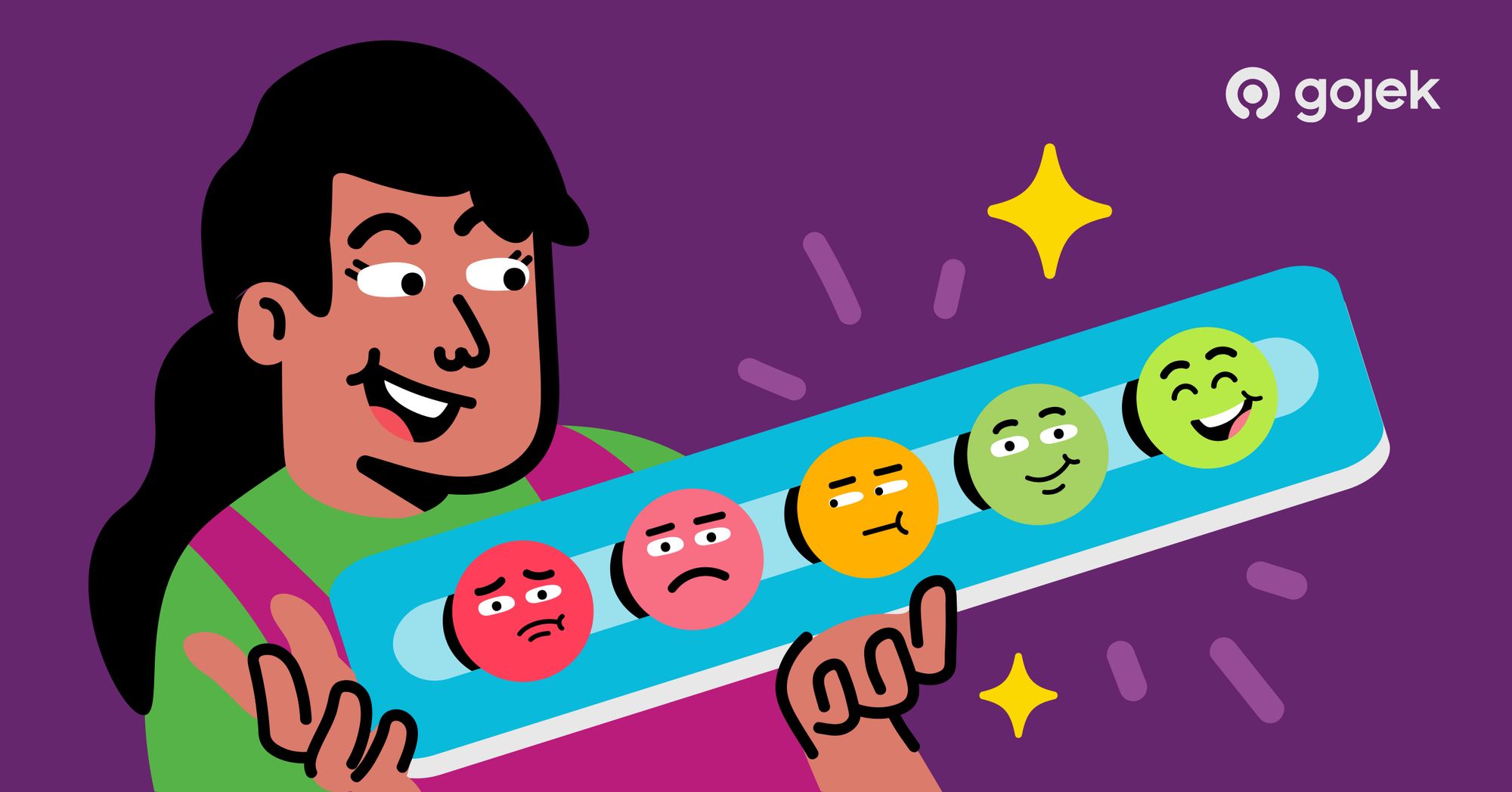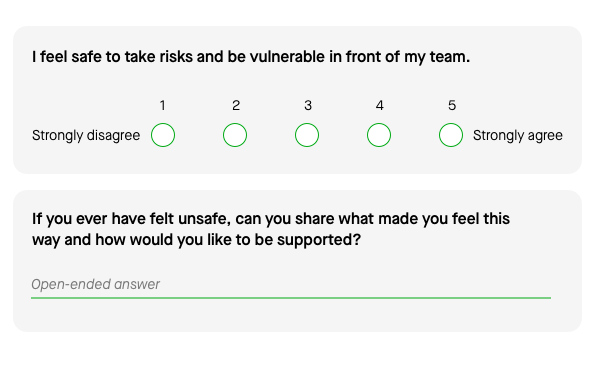Measuring Happiness At Gojek Design
The story of how we build and measure happiness of our designers.

By Anita Aminuddin
When you hear about “happiness in the workplace”, what’s the first thing that comes to mind? The answer to this is very subjective, and could range from having a spectacular team to work with, to gym facilities at the office, or a fun team activity on a beach. Although, it could be much more than that.
Happiness in the workplace is the foundation of everything, from productivity to engagement, and eventually impacts organization’s performance and growth. According to Gallup survey, organizations that maintain a high employee morale record a 17% increase in productivity. What’s even more interesting is that this is something we can measure.
It all started with problems, people problems
The pandemic has clearly changed our lives. Working from home and having virtual conversations has become the new normal. While some people enjoy their time at home with their families, others are struggling with loneliness, anxiety, and boredom. A sudden change in how things work, like it happens with most teams, affects our designer team’s morale and well-being at work, which could potentially lead to burnout.
So, we took this as an opportunity to see how we could help our designers be happier at work. It is aligned with DesignOps’ mission to optimize the effectiveness and quality of the design which can be achieved by having a happier team.
Discovering with data
Gojek has always been a data-driven company. We use facts, metrics, and data to guide our decisions and initiatives. We want a nuanced and data-driven understanding of what’s going on in the team to address and solve specific issues.
To have a better understanding of our team’s situation, we explored a variety of data sources:
- Annual survey
An annual survey that was held by our People Science team. The insights of this survey helped us get a high-level overview of the team’s situation. - Focus group discussions (FGD)
The simple thing we do to understand someone’s feelings is by talking to them. We held multiple FGDs with some of our designers to talk about their feelings, frustrations, and expectations of working as designers at Gojek. Because these conversations can be very personal, it’s important to keep the group small with only 2–3 people who are all on the same level. - Collect anecdotal informations
Being a DesignOps, people often come to us with problems. This may appear to be off-topic, yet it turned out to be valuable information that we can use.
The happiness factors
Based on the insights we collected, we use the affinity mapping method to organize those large amounts of data. We identified that there are seven key aspects that drive happiness feelings at work:
- Psychological safety
Designers feel safe to take risks and be vulnerable in front of their team - Relationship and interaction
Designers have a positive relationship and interaction with each other in their team - Resilience and stress management
Designers are able to manage their workload and cope with stress - Recognition, appreciation, and kindness
Designers feel recognized and appreciated for the work they do - Meaningful and purposeful work
Designers find their work is meaningful and they can create impact - Engagement
Designers enjoy doing their work - Work-life balance
Designers have a healthy work-life balance
Measuring happiness
With the seven key drivers in mind, we framed a set of statements in a survey that we use as a parameter to be measured. Having our own survey helps us to have more control over relevant aspects and be able to measure the impact of our initiatives on an individual level.
This survey uses the 5 points Likert scale which enables us to uncover degrees of opinion and pinpoint the key aspects that we need to improve. Moreover, we combined these statements with open-ended questions that focused on what makes them feel that way and how they would like to be supported. For instance, this is how our survey looks like:

Combining both quantitative and qualitative insights could help us to understand what’s happening when the number in a specific key driver is low and how we can improve it.
Making things happen
An in-depth understanding of our data enables us to design suitable initiatives to improve our team’s happiness at work. So, here is what we do with all this data:
- Think forward with a community-driven approach
We set up a happiness task force and we invited all designers to join, we called ourselves the Happiness Hive. Together, we gather a lot of ideas and implement them to improve the happiness feeling at work. - Involve design managers and leadership
Managers are playing a great role in building and retaining positive culture in the team. We provided them with the happiness report of their team, we support and empower them to become actively improving the team morale.
Building the happiness initiative by involving relevant individuals can preserve real ownership, boost adoption, and bring a shared sense of purpose in spreading happiness in our team. These are a glimpse of our initiatives in building happiness in our team:
- Superstars of the month
Aligned with the key driver of recognition, appreciation and kindness, we provide a space for people to give kudos to everyone who has been doing a great job. We shout them out in our monthly Design All Hands. - Themed and targeted events
The data helps us to understand which key driver has a lower score than the others. Giving events that are related to these low key drivers could give our team insights and practical tips for improving happiness feeling at work. - Fun meetings
Yes, it’s a meeting where we don’t talk about work at all and just have fun! We have game sessions, cooking class, movie night, drawing class, virtual karaoke, and everyone in the team is welcome to join. - Professional training on well-being
Managers are amplifiers and they need to be well-equipped in order to manage the team. So, we provided them with professional training on well-being that is useful to improve their personal and the team’s well-being.
You will find ample resources and ideas on how to make your team happier. Explore and experiment with as many ideas as possible and see how it impacts the team.
The learning journey
To recap, here are the key takeaways throughout our journey:
- Treat everything like a design project
Using a design thinking approach in a design project is not revolutionary. But it’s new for us to apply it to these complex people's problems and it definitely helped us in a measurable way. - Combine qualitative and quantitative data in your measurement
Collecting data will not make any sense if you don’t actually do something about it. Gather problems and opinions from your team, ideate together, and combine them with numbers can help you to actually do something than just collecting data. - Focus on what you can control
There are so many aspects that drive happiness and it can be different for each person and situation. But you can improve it by determining what aspect that is within your control and keep your focus on that aspect. - Stay connected and learn
The simple thing to understand people’s feelings and the situation is we talk to them. Engage with the team regularly and keep the survey regularly to track the measurement.
The journey of building happiness in our team is an ongoing process. We’re excited to see how our team’s happiness can improve.

Find more stories from our vault, here.
Check out open job positions by clicking below:

